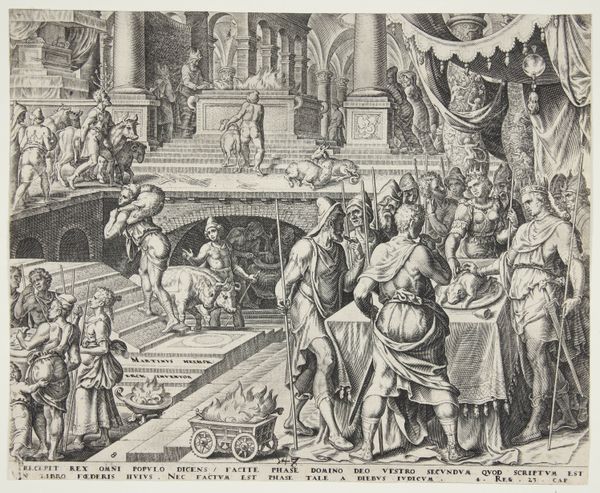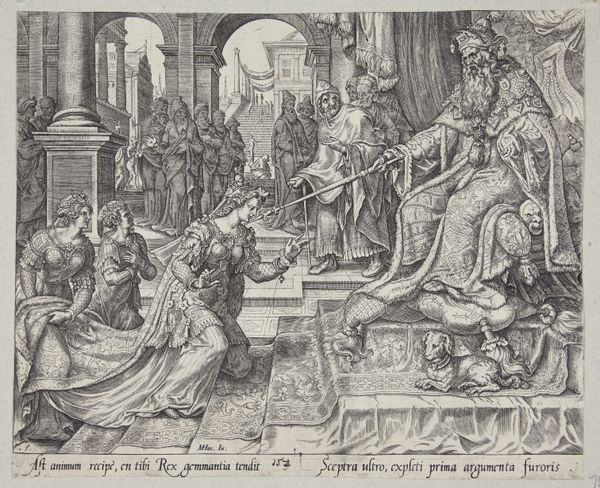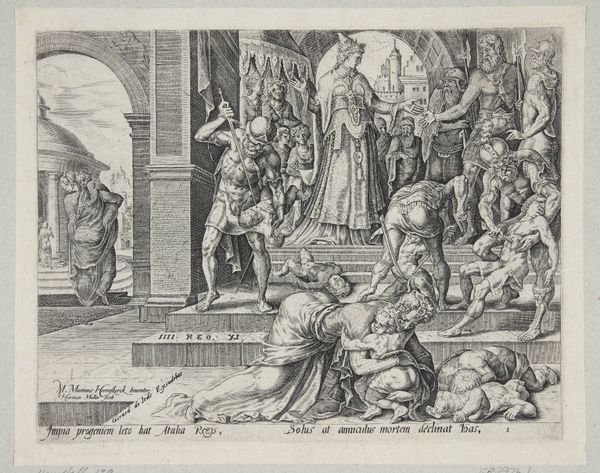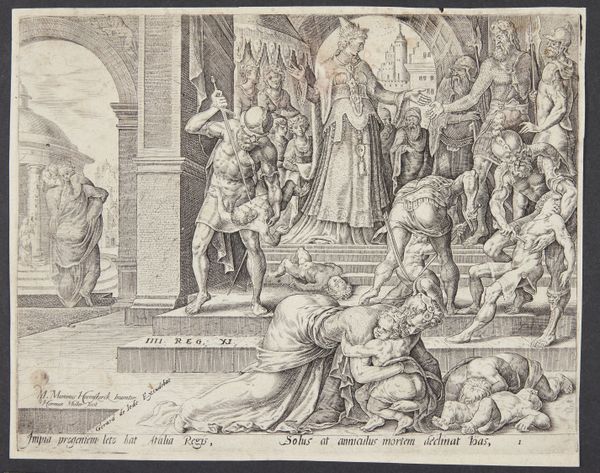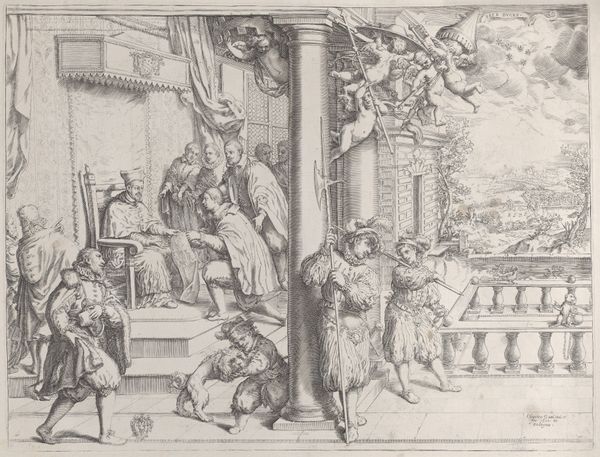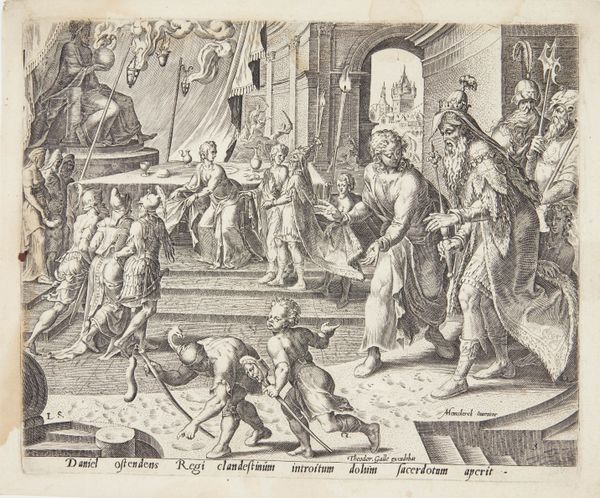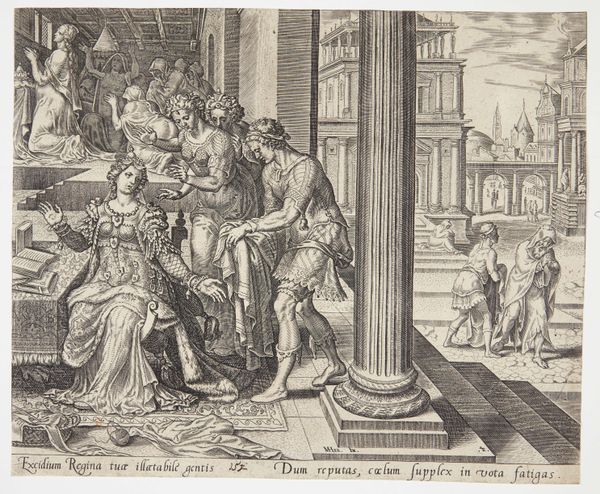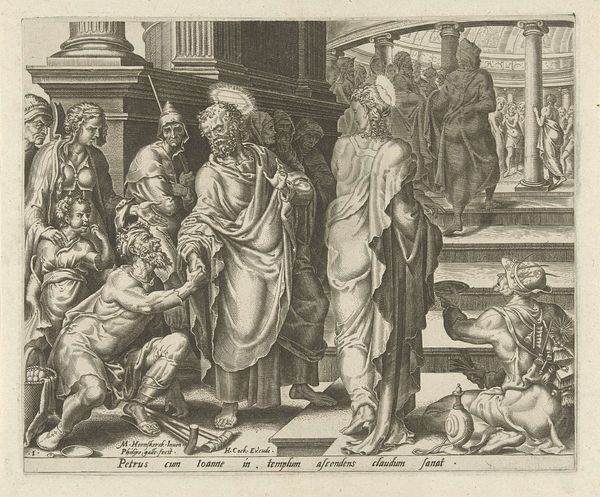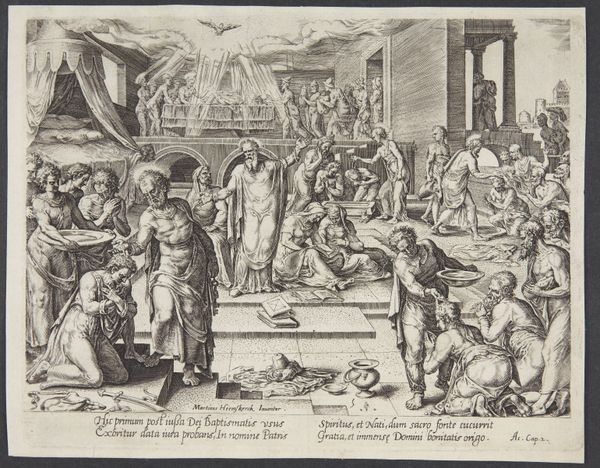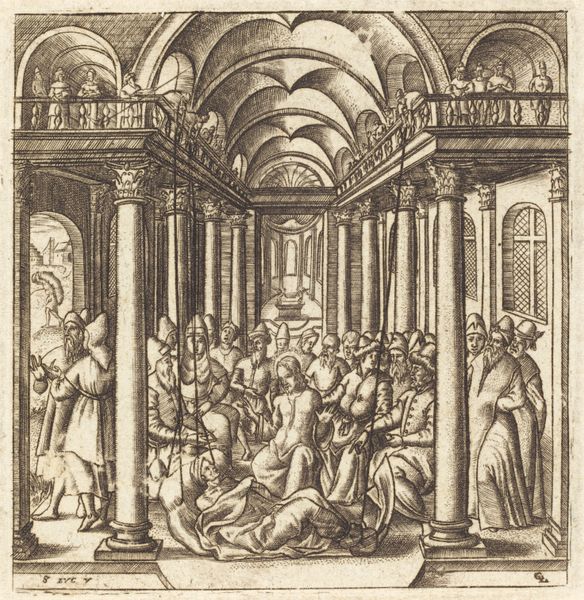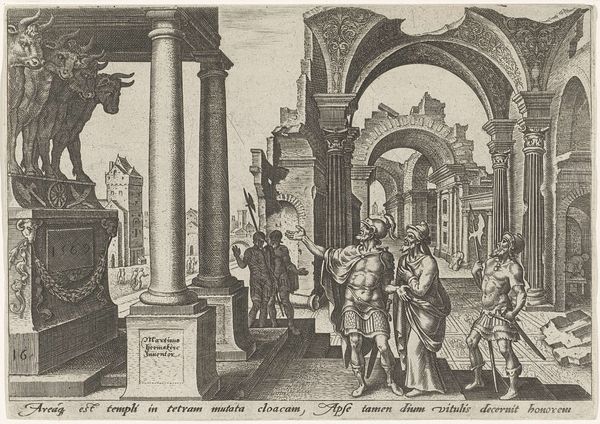
print, engraving
ink drawing
narrative-art
mannerism
figuration
history-painting
engraving
Dimensions: 212 mm (height) x 265 mm (width) (monteringsmaal), 205 mm (height) x 250 mm (width) (plademaal)
Curator: Looking at this engraving, "Josiah Celebrating Passover," crafted by Philips Galle between 1567 and 1570, my initial feeling is one of complex orchestration. Editor: It does have a theatrical air, doesn't it? All these figures, densely packed, arranged across different tiers. It almost feels less about religious observance and more about civic duty on display. What strikes me first is the sheer labor involved—not just the artist’s meticulous work in etching all these fine lines, but all the bodies shown, heaving animals, and building up altars, burning meat. Curator: Precisely. And Galle's meticulousness extends beyond mere representation. As an ink drawing, later translated into a print, the layered details amplify the scene's emotional depth and reflect the significance of Josiah's religious reforms, a moment of reclaiming ancient tradition. Do you feel the weight of tradition in the piece's design? Editor: Absolutely, but that "weight" translates directly to economic cost: consider the scale of the altar and architecture dominating the piece. Each sacrificed animal represents someone's livestock, someone's income and sustenance being diverted to this ritual. Curator: A powerful reading, focusing on the resources invested. It highlights the community's devotion—or perhaps the degree of control wielded by Josiah, influencing the economy through religious practice. Notice how he positioned the central figures in elevated positions, in accordance with the artistic conventions of Mannerism? Editor: That’s important: This wasn’t “history” at the time. The piece has contemporary significance. Galle isn't simply recording; he's framing it with particular political ideas. Also consider where it’s currently located, the Statens Museum for Kunst: who had access to engravings like these then and now? Curator: A keen question of access and circulation, leading back to your focus on materials. "Josiah Celebrating Passover" isn’t merely a static image, but part of a larger conversation, accessible, yet mediated by institutions and historical power dynamics. This also invites consideration on our subjective role. Editor: That is very true, and analyzing it gives me even greater food for thought and reminds us that even historical pieces are embedded in contemporary issues.
Comments
No comments
Be the first to comment and join the conversation on the ultimate creative platform.
